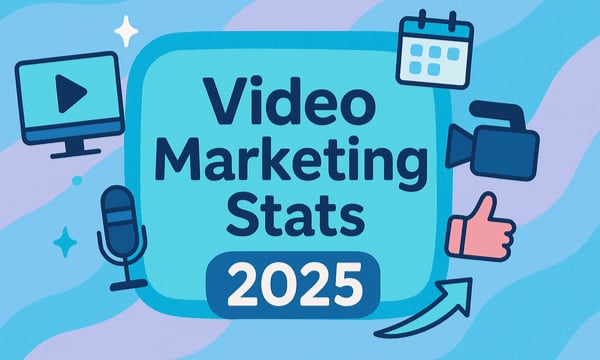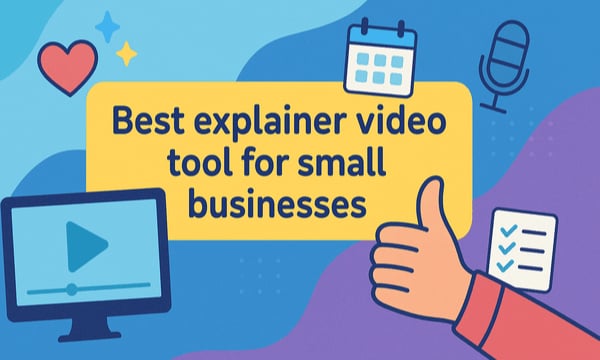We live in a world where information and ideas bombard us 24/7 and that means peoples’ attention is one of the most precious commodities around.
That’s why if you’re trying to market and sell a product, service or idea today, you need an elevator pitch that's punchy, engaging and memorable.
What exactly is an elevator pitch?
The concept of an elevator pitch is that you have an outline of your idea, business or service ready that's short enough to deliver in the space of an elevator ride, and grabs the attention of the other person, so that they want to find out more.
They’re used every day in business life including at networking events, dinner parties, in sales presentations, to pitch new ideas at work and so on.
The origin of the elevator pitch
There's a bit of mystery around the origin of the term ‘elevator pitch’ with three different stories circulating.
The first is that it comes from the old Hollywood studio days where screenwriters would have an elevator ride to catch one of the studio executives and pitch their script.
The second is that it originates in the 1990s where fashion editor Michael Caruso struggled to get time with his editor-in-chief, so he found ways to sum up his ideas in the time it would take for them to ride the elevator.
The third story is that a Total Quality Management specialist called Phillip Crosby created the concept in the 1980’s, but that’s not quite as interesting as Hollywood or Fashion, (unless you love manufacturing!)
Who knows which version is true, but one thing we can say for sure is that done right the elevator pitch will lift your business up!
What are the components of a great elevator pitch?
A pitch must be memorable, targeted, relevant, and no longer than 60 seconds, but shorter if possible. If you get it right, it should also make you fall in love with your own business, charity or idea all over again!
To achieve all of that your pitch must include:
- An introduction
- Problem positioning
- Your unique selling point
- Why you/your business cares
- A call to action
Let’s go through each of these in turn.
1. Elevator pitch introduction
This is a short sentence which introduces your company, charity or movement, says briefly who you help and the result you get them. This gets straight to the big ‘what’s in it for me?’ question that will inevitably be in the other person’s mind.
To find that desire, that ‘what’s in it for me’, you first need to uncover the underlying pain that’s driving your customer to get their problem solved. People have problems that they want to solve, but generally these aren’t the underlying pain point, and you need to dig to find this out.
There’s a technique used in manufacturing called ‘The Five Whys’ which is designed to get to the source of a problem so that it gets fixed rather than just remedying one of the surface symptoms.
Here’s an example of how you can apply the Five Whys to get to the potential customer pain, where the ‘problem’ is needing a great elevator pitch.
Now we know our customer's pain points and desires, if you were selling a pitch writing service, you might introduce your company like this.
"Hi, I’m from ‘Pitch Write’ and we help entrepreneurs get sales more easily so that they can spend less time working and more time doing what they love."
Knowing your customer’s real pain and desire will make your pitch more compelling and relatable. You can use our 'Five Ways' questioning template as your guide to uncover your customer's true pain points or desires.
2. Elevator pitch problem positioning
In this part you need to cover the problem and why the existing solutions are flawed. Think about the problems and issues in the market you’re serving and how your competition falls short.
Using the same pitch writing service example for this part you might say: "In today’s world there’s more competition than ever, and our attention spans are shorter! This means if you’ve got a boring pitch that doesn’t grab people right away, connect with them and say why you’re different, then you’re wasting your time. But that’s where we come in."
3. Your unique selling point (USP)
And that leads nicely into your USP, also known as your value proposition, which is what makes you different from everyone else in the marketplace.
It’s the answer to the question ‘Why should I buy from you, or donate to you, or join you?’, and if you aren’t able to answer that question quickly for people, they will skip to someone else who can.
Most of us will find it difficult to compete on product, price or content quality alone. So, we need to shift the focus and show people what else we’re about. It’s a case of saying ‘Hi, we are passionate about “this”, and that’s why we’re different. If you like “this” then we’re the only game in town.’
When you know your market, your customers, your competition, and your business, you can change the game to favour your uniqueness. You don’t have to level the playing field; you can take it to a whole new ball park! (You still need to make sure your USP is addressing the market need, though. You’ll absolutely stand out if you’re the only person selling flip flops in the arctic, but it’s unlikely you’ll get many sales!)
So, to carry on with the example, here’s what you might say for your USP. "Our pitch writers work in entertainment alongside business, which means we know how to tell your story in a way that connects, captivates and converts."
"We’ve written tons of pitches… from home-schooling to headstones, and everything in between, so you know you’re in safe hands."
Your USP sums up what’s special about you, or what’s special about the people you serve.
4 & 5. Why you or your business cares and your call to action
This is all about showing why you do what you do and reiterating your USP through sharing your mission, passion and the value you create for your clients and customers.
It’s important to finish with a call to action. After all, there’s a reason why you’ve created a pitch, and you should let people know what you want them to do next. The call to action could be ‘visit the website’, or ‘book a call’, or ‘stop by our stand and get your free guide’.
So, using our pitch example again, here you might say…
"We’re passionate about helping entrepreneurs find their unique hook for a pitch that gets more sales and smiles. If that sounds good to you then [call to action]."
Here’s the complete pitch so you can see it all together.
There are times when it’s difficult or not possible to deliver your pitch in person, or you want to combine a great pitch script with sound and images to make it even more engaging. That’s why many businesses, marketers, freelancers and salespeople are starting to use video for their pitches.
Why video is a powerful way to deliver your message
They say that a single minute of video is worth 1.8 million words, and that’s because we process visual information 60,000 times faster than text (HubSpot). It’s one of the big reasons why video is so effective for sharing information or explaining complex topics in a short timeframe.
Our survival instincts are another reason why video is so powerful! Evolution has taught us to be alert to things that move, so we are easily captivated by motion on screen. 74% of marketers say that video converts better than any other medium (Forbes).
Video also taps into our emotions more easily because of our ‘mirror neurons’ which react to what we’re watching even if it’s not happening to us directly. According to Indiegogo, campaigns with video pitches on average raise 114% more funds than campaigns without video.
Here are a few more statistics from HubSpot about the power of video:
- Adding the word ‘video’ in a subject line boosts the click-through rate by up to 300%.
- Conversion rates see an 80% increase for landing pages that include video.
- Over 30% of people’s time spent online is dedicated to watching videos.
- 60% of company decision-makers prefer to watch video content than read an article.
- 64% of shoppers are more likely to purchase after watching a video.
Research by Professor Richard Wiseman has also shown that explainer videos result in a 15% increase in information retention over talking head videos. That's due to the combination of words, images and sounds, which are all stored in multiple locations in our memory making it easier for us to recall.
That’s why animated explainer videos are becoming more popular, and why VideoScribe is a tool that’s being used across the globe, in multiple industries for pitches and lots more!
If you’re ready to get started making your own elevator pitch, then start a seven-day free trial of VideoScribe today, (no credit card required).
Once you’ve created your elevator pitch, give it the attention it deserves and share it on social media with #MadeWithVideoScribe for a chance to be featured on our website.
Do you have any tips or advice to add? We’d love to hear from you, let us know in the comments!



.png)



![How to create animation magic [3-part guide to video success]](https://blog.videoscribe.co/hubfs/How%20to%20create%20animation%20magic%20guide%20VideoScribe.png)


%20(1).png)



COMMENTS